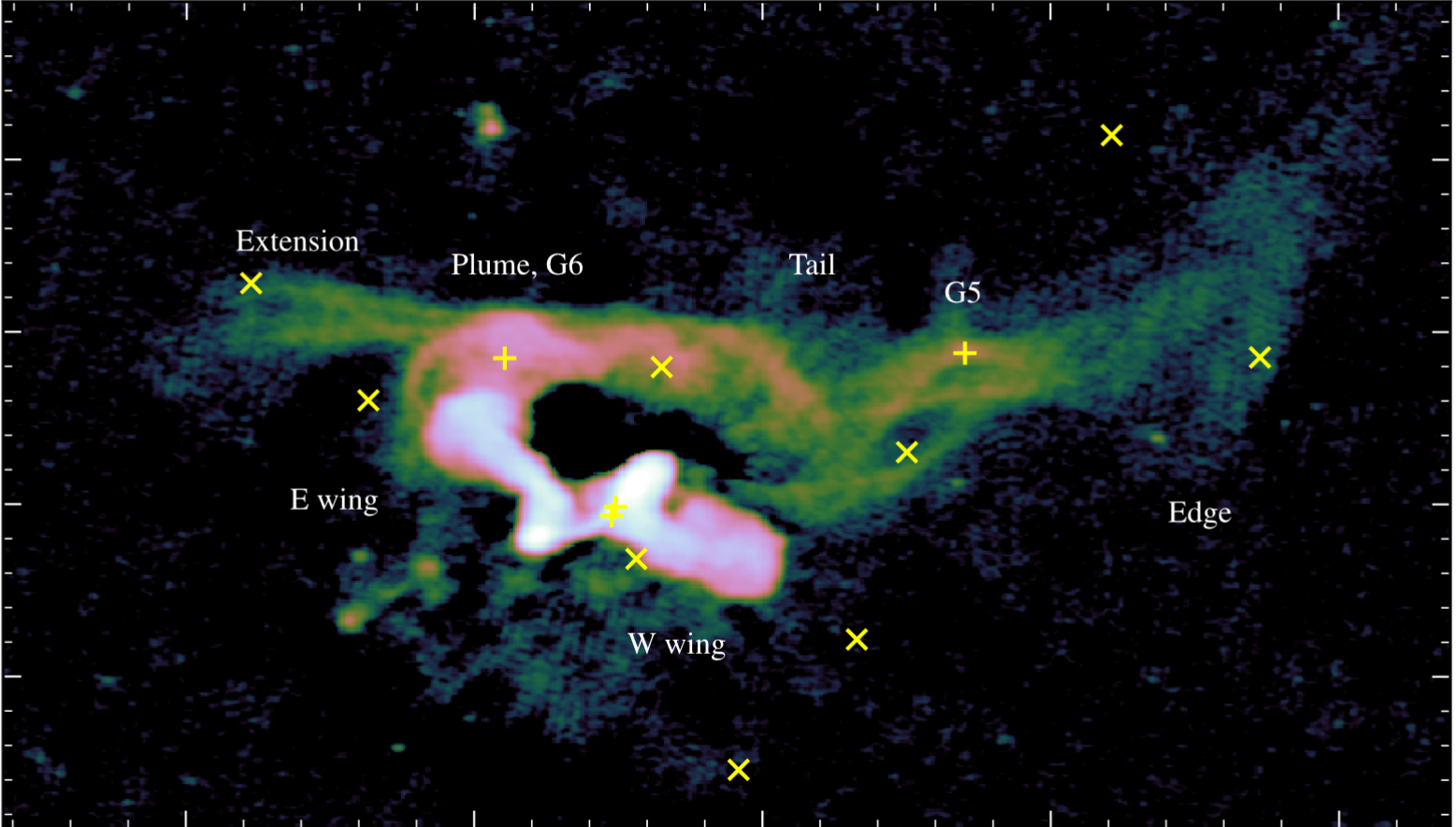Famous 'X-Shaped' Galaxy Isn't Actually X-Shaped
Astronomers thought the X might be a signature of an ancient black hole collision.

There's a galaxy not too far from our own that astronomers were very sure was shaped like an "X," at least from the perspective of radio telescopes. But a new, clearer radio telescope image shows that the galaxy looks more like a stretched-out blob.
That image, published July 11 in the journal Monthly Notices of the Royal Astronomical Society, upends decades-long notions about the galaxy, NGC 326, and disrupts a long-standing theory about collisions between supermassive black holes. It's a product of the Low-Frequency Array (LOFAR), a powerful radio telescope in the Netherlands.
NGC 326 really seemed to be X-shaped, the authors of the July 11 paper wrote. Whenever researchers studied the galaxy's radio signatures — the particular patterns of radio waves that a structure emits — they seemed to show four distinct lobes, the legs of the X. That was evidence, they thought, of a past giant collision between two supermassive black holes. But the new image presents a more complicated picture — one that a black-hole collision alone can't explain.
Related: 9 Ideas About Black Holes That Will Blow Your Mind
Here's why the X shape was a big deal for black-hole researchers. Large galaxies, including our own Milky Way, have supermassive black holes at their centers, as Live Science has previously reported. Those black holes, big as they are, are mostly too small and far away to observe with even the best telescopes. But astronomers can recognize those black holes by their radio signatures. Many supermassive black holes blast two jets of matter into space, made of material that barely escaped falling into the void. Those jets shoot off in opposite directions at significant fractions of the speed of light, creating long smears of glowing particles across space, often bigger than their host galaxies, that radio telescopes can detect.
But researchers had long wondered: When large galaxies merge, do their supermassive black holes collide? It's an open question in astrophysics whether the universe has been around long enough for two supermassive black holes to have slammed together, the authors of the paper wrote. Once two such giants stumble into each other's orbits, the process of spinning closer and closer, and then eventually colliding, could take so many billions of years that we'd never see it in our universe.
But some astronomers thought X-shaped galaxies were evidence that those collisions had happened. The theory was that, at some point, a supermassive black hole producing two jets slammed into another supermassive black hole, resulting in a new, bigger black hole oriented on an all-new axis, according to the authors of the paper. That new black hole would shoot its two jets in a totally different direction, but the jets from the original black hole would remain glowing in space, creating that X shape.
Sign up for the Live Science daily newsletter now
Get the world’s most fascinating discoveries delivered straight to your inbox.
This theory of X-shaped galaxies has some pretty strict terms, though: There can't be any smearing between the lobes of the jets. The empty spaces have to be dark. That's because the black hole would have reoriented so suddenly that the jets wouldn't swing across the intervening space, spraying it with particles. The process, from an outside perspective, would look like one jet source switching off just as another switched on in the same location, spraying in different directions.
LOFAR's new picture shows that, in NGC 326 at least, that's not the case. The spaces between the lobes of the galaxy's "X" are filled with glowing particles, rendering it more like a blob than a letter of the alphabet.
"We emphasise that a BH–BH [black hole-black hole] merger, either manifesting as an abrupt jet reorientation or as a slower transition ... is not ruled out by these data," the researchers wrote in the paper. "But it is no longer either a necessary or a sufficient explanation for the observed source morphology on its own."
In other words, black holes might have merged in NGC 326. But this more detailed picture doesn't necessarily show the detritus of such a merger. And if a black-hole merger did happen in NGC 326, that merger on its own can't explain the shape astronomers can now see in that part of space.
Down the road, the researchers wrote, astronomers will have to reevaluate their assumptions about X-shaped galaxies, of which NGC 326 was the "prototypical" example. As astronomers gear up to put the Laser Interferometer Space Antenna, or LISA — the most sensitive gravitational-wave detector ever — in space, some have produced calculations for how many supermassive black hole mergers (which produce very large ripples in space-time, also know as low-frequency gravitational waves) the instrument should be able to detect each year based on the number of X-shaped galaxies in space. But if NGC 326 isn't truly X-shaped, can astronomers trust that any of the more distant ones are? It might be time to go back to the drawing board on those calculations.
- 11 Fascinating Facts About Our Milky Way Galaxy
- Big Bang to Civilization: 10 Amazing Origin Events
- Spaced Out! 101 Astronomy Photos That Will Blow Your Mind
Originally published on Live Science.










